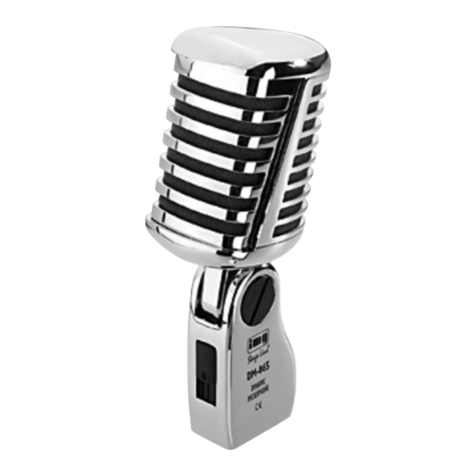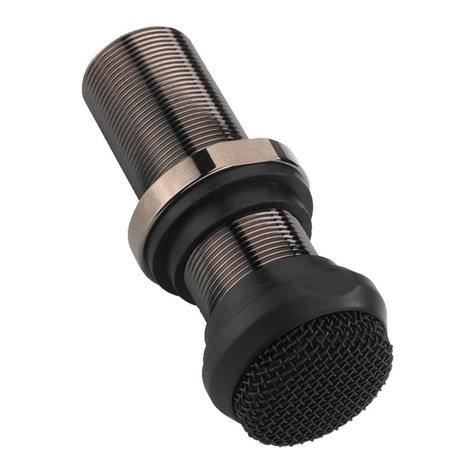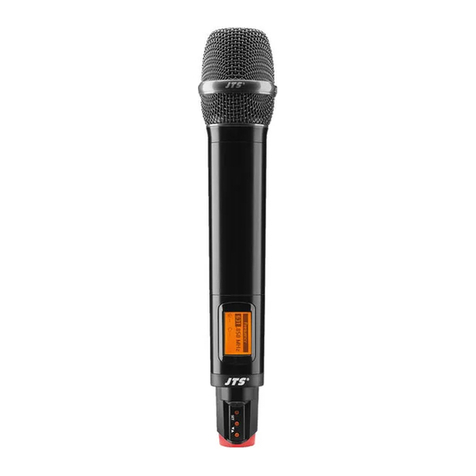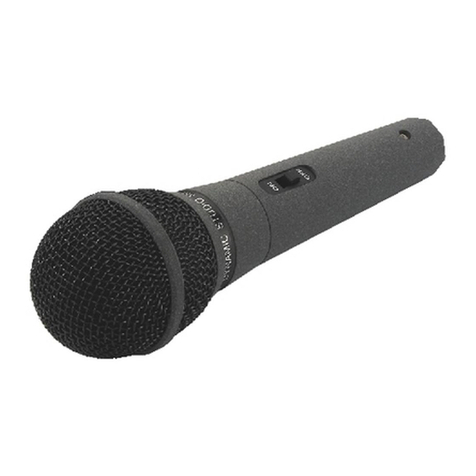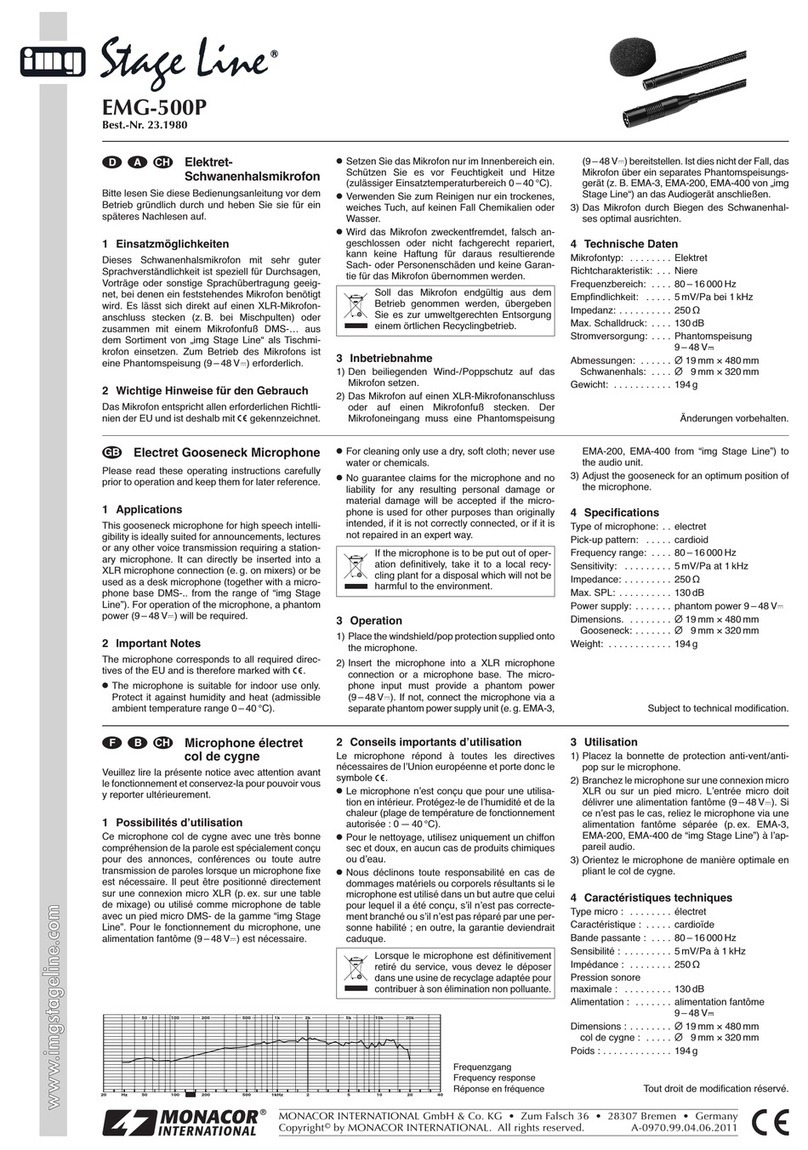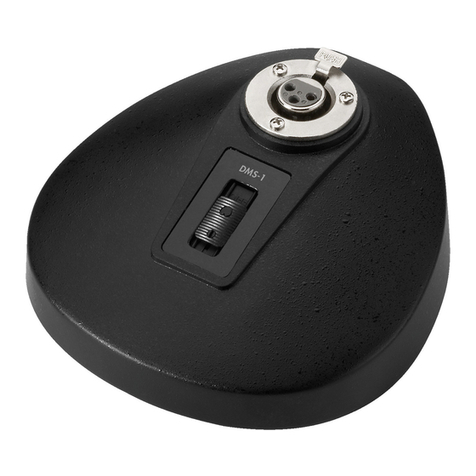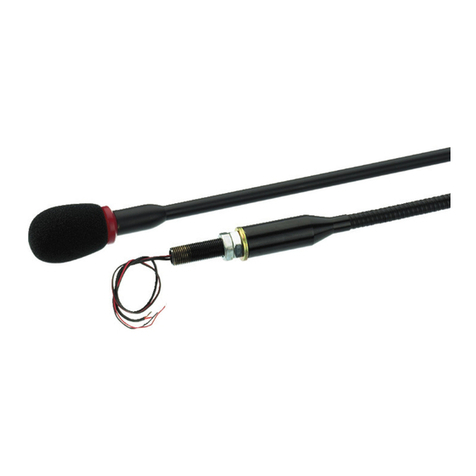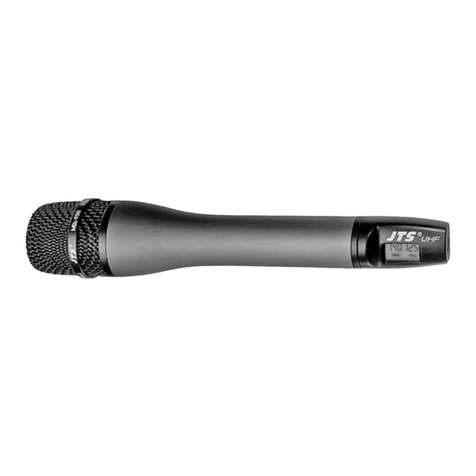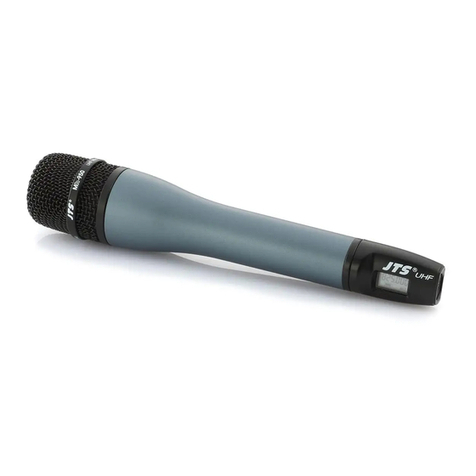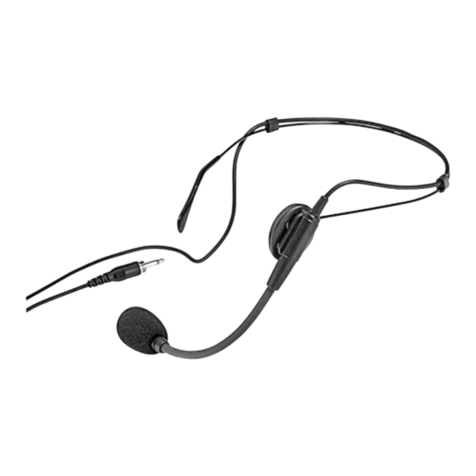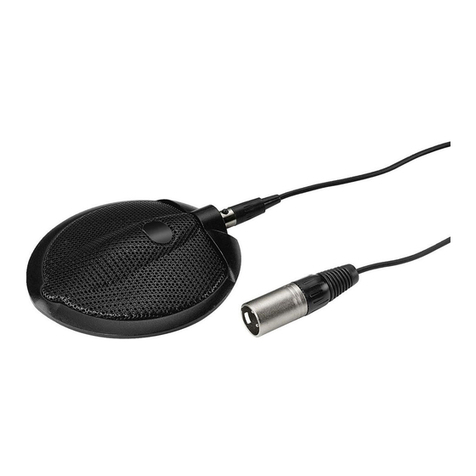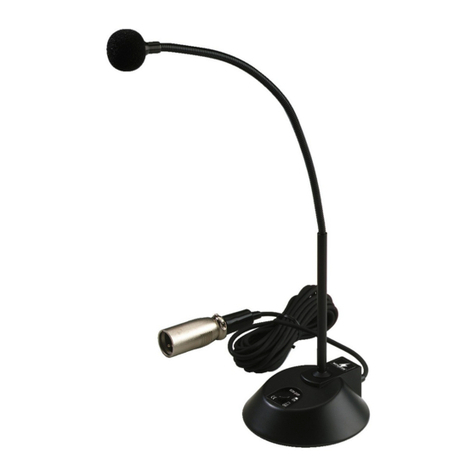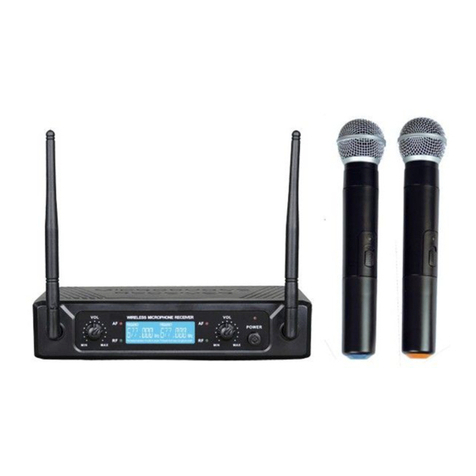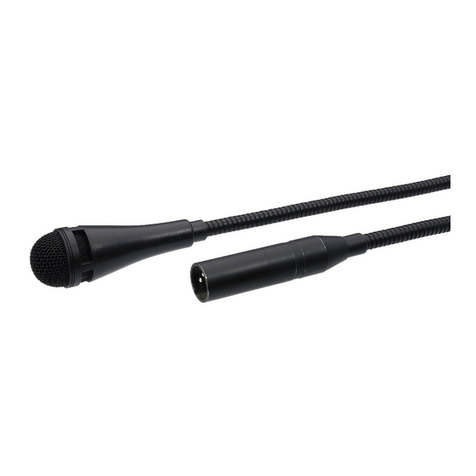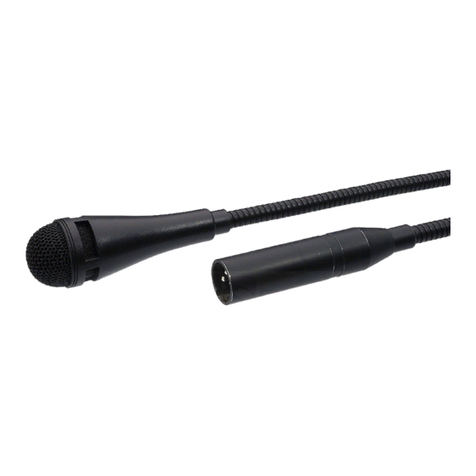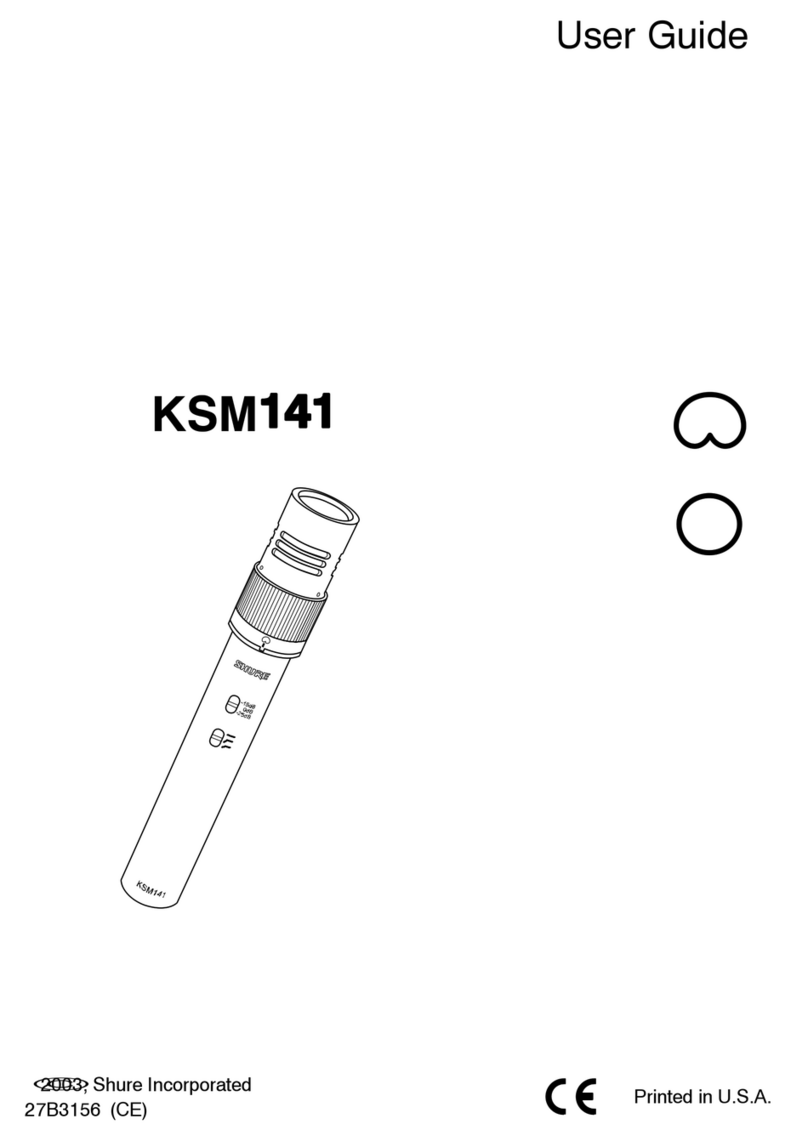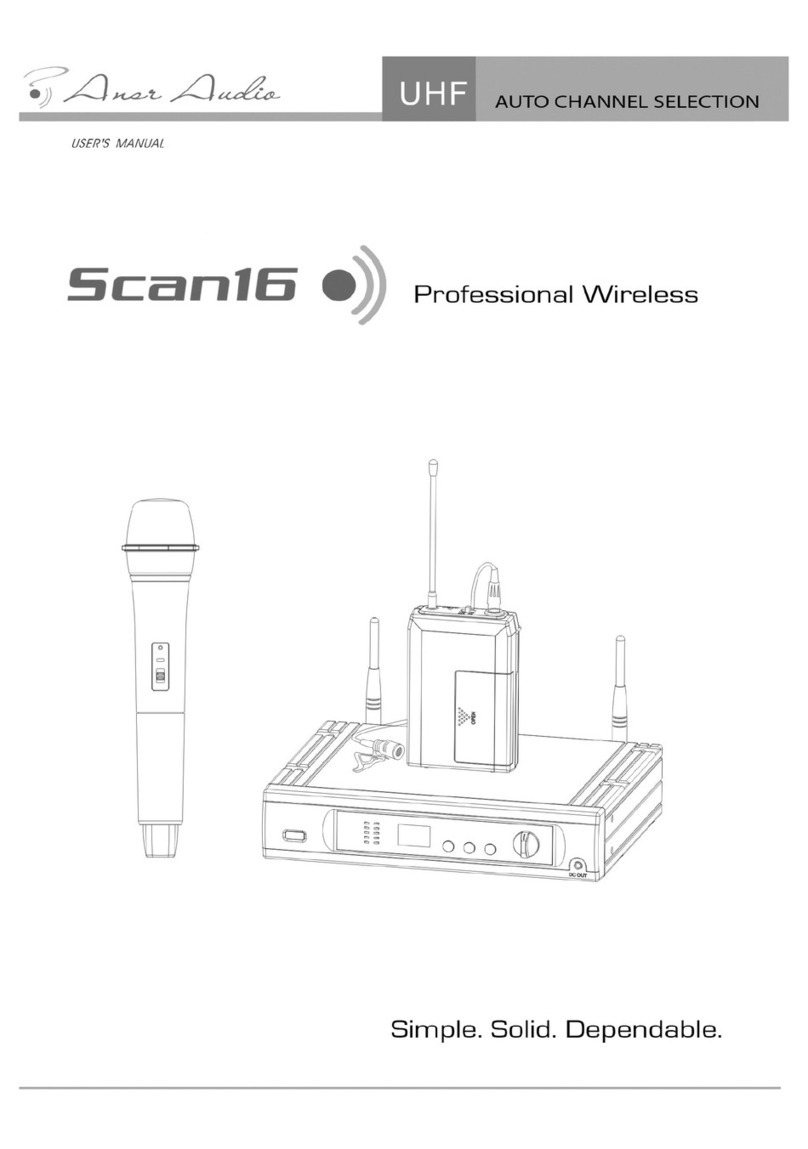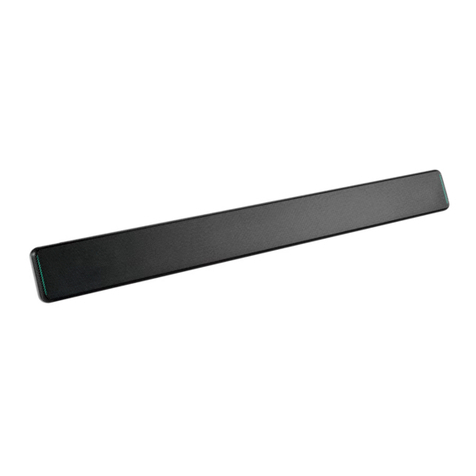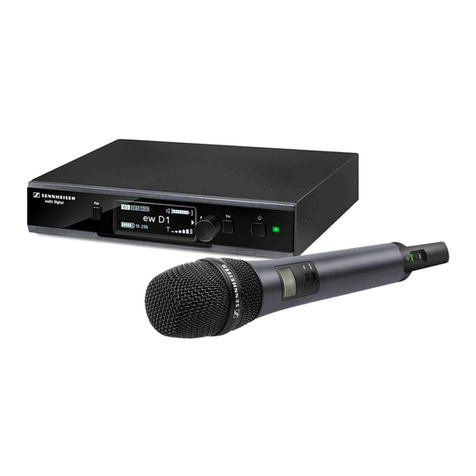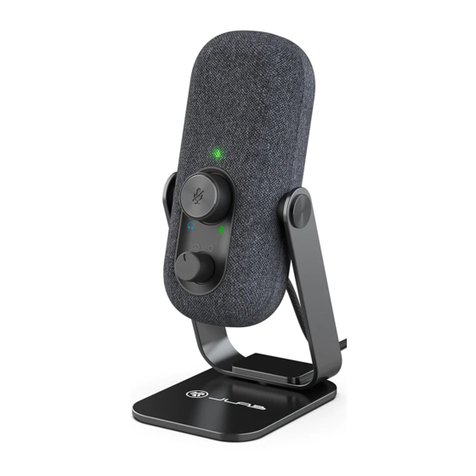Microphone USB à condensateur
Veuillez lire la présente notice avec attention avant
le fonctionnement et conservez-la pour pouvoir vous
y reporter ultérieurement.
1 Possibilités dʼutilisation
Ce microphone avec une membrane extrêmement
fine (2 µm) est conçu pour des applications en stu-
dio et des enregistrements privés exigeants, il est
bien adapté pour une prise de son dʼinstruments et
des applications de parole. Il se branche directe-
ment sur un ordinateur via une interface USB 1.1 ou
USB 2.0 et est immédiatement prêt à fonctionner.
Pour les enregistrements audio via lʼordinateur,
on peut utiliser le logiciel audio livré avec le système
dʼexploitation ou utiliser un logiciel audio installé en
plus. Différents programmes dʼenregistrements
audio par exemple “audacity” sont disponibles en
freeware sur Internet.
2 Conseils dʼutilisation importants
Le microphone répond à toutes les directives né-
cessaires de lʼUnion Européenne et porte donc le
symbole .
GLe microphone nʼest conçu que pour une utilisa-
tion en intérieur. Protégez-le de lʼhumidité et de la
chaleur (plage de température de fonctionnement
autorisée : 0 – 40 °C).
GPour le nettoyer, utilisez uniquement un chiffon
sec et doux, en aucun cas de produits chimiques
ou dʼeau.
Copyright©by MONACOR INTERNATIONAL GmbH & Co. KG, Bremen, Germany. All rights reserved. A-0803.01.01.2008
®
ECM-190USB
Best.-Nr. 23.5550
www.imgstageline.com
GNous déclinons toute responsabilité en cas de
dommages matériels ou corporels résultants si le
microphone est utilisé dans un but autre que celui
pour lequel il a été conçu, sʼil nʼest pas correcte-
ment branché ou sʼil nʼest pas réparé par une per-
sonne habilitée ; en outre, la garantie deviendrait
caduque.
3 Fonctionnement
1) Vissez lʼaraignée livrée sur un pied avec un file-
tage 16 mm (5/8"). Pressez les deux étriers à fil
sur le support et insérez le microphone.
2) Desserrez la vis papillon sur le support, position-
nez le microphone de telle sorte que la face avant
du micro (avec le symbole ) soit dirigé vers la
source sonore puis revissez la vis.
3) Allumez lʼordinateur.
4) Reliez le cordon livré au microphone et à un port
USB de lʼordinateur : le microphone est reconnu
par le système dʼexploitation comme appareil
USB dʼentrée audio. Les drivers nécessaires
(drivers standards du système dʼexploitation)
sont automatiquement installés.
(Dans certains cas cependant, il peut être né-
cessaire de donner manuellement le chemin
dʼaccès des drivers sʼils ne sont pas automati-
Lorsque le microphone est définitivement
retiré du service, vous devez le déposer
dans une usine de recyclage adaptée pour
contribuer à son élimination non polluante.
quement trouvés par le système dʼexploitation. Si
besoin, installez les drivers nécessaires via le CD
dʼorigine du système dʼexploitation sʼils ne sont
pas disponibles sur lʼordinateur).
5) Appelez le logiciel audio utilisé, effectuez les ré-
glages pour la prise de son par le micro (voir
notice du logiciel audio).
4 Caractéristiques techniques
Système : . . . . . . . . . . . . . . back-électret/cardioïde
Bande passante : . . . . . . . . 20 – 18 000 Hz
Sensibilité, impédance : . . . 12,5 mV/Pa à 1 kHz, 200 Ω
Pression sonore maximale : 130 dB
Rapport signal/bruit : . . . . . 76 dB
Convertisseur A/D : . . . . . . 16 Bit pour taux 48 kHz
Alimentation : . . . . . . . . . . . 5 V par interface USB
Connexion sur le micro : . . . prise USB femelle type B
Cordon micro : . . . . . . . . . . cordon USB 3 m (fiche mâle
type A/fiche mâle type B)
Standard de branchement : USB 1.1, USB 2.0
Dimensions, poids : . . . . . . 56 × 195 × 46 mm, 430 g
Système d’exploitation nécessaire :
Windows 98 SE, Windows ME, Windows 2000, Windows XP,
Windows Vista, Mac OS 9, Mac OS X
Tout droit de modification réservé.
Windows est une marque déposée de Microsoft Corporation aux Etats-
Unis et dans les autres pays.
Mac OS est une marque déposée de Apple Computer, Inc. aux Etats-Unis
et dans les autres pays.
Microfono USB a condensatore
Vi preghiamo di leggere attentamente le presenti
istruzioni prima della messa in funzione e di con-
servarle per un uso futuro.
1 Possibilità dʼimpiego
Questo microfono con membrana particolarmente
sottile (2 µm) è stato realizzato per impieghi in studi
di registrazione e per il home-recording esigente e si
presta sia per il prelievo del suono di strumenti mu-
sicali che per applicazioni di voce. Si collega diret-
tamente ad un computer con porta USB 1.1 o USB
2.0 ed è subito pronto per lʼuso.
Per la registrazione tramite il computer si può
usare il software audio in dotazione con il sistema
operativo, oppure un software audio installato in ag-
giunta. Vari programmi di registrazione audio, p. es.
“Audacity”, sono disponibili in Internet come free-
ware.
2 Avvertenze importanti per lʼuso
Il microfono è conforme a tutte le direttive richieste
dellʼUE e pertanto porta la sigla .
GUsare il microfono solo allʼinterno di locali. Pro-
teggerlo dallʼumidità e dal calore (temperatura
dʼimpiego ammessa fra 0 e 40 °C).
GPer la pulizia usare solo un panno morbido,
asciutto; non impiegare in nessun caso prodotti
chimici o acqua.
GNel caso dʼuso improprio, di collegamenti sbagliati
o di riparazione non a regola dʼarte del microfono,
non si assume nessuna responsabilità per even-
tuali danni consequenziali a persone o a cose e
non si assume nessuna garanzia per lʼappa-
recchio.
3 Messa in funzione
1) Avvitare il supporto del microfono in dotazione
(spider) su uno stativo con filettatura di 16 mm
(5/8"). Esercitare una pressione sulle due staffe di
filo di ferro sul supporto ed inserire il microfono.
2) Allentare la vite ad alette sul supporto e posizio-
nare il microfono in modo tale il suo lato anteriore
(con il simbolo ) sia rivolto verso la sorgente so-
nora, e quindi stringere di nuovo la vite.
3) Avviare il computer.
4) Collegare il cavo in dotazione con il microfono e
con una porta USB del computer: il microfono
viene riconosciuto dal sistema operativo come
dispositivo di input audio. I driver necessari
– driver standard del sistema operativo – ven-
gono installati automaticamente.
(In alcuni casi può essere necessario stabilire un
percorso manuale dei driver se questi non ven-
gono trovati automaticamente dal sistema ope-
Se si desidera eliminare il microfono defi-
nitivamente, consegnarlo per lo smalti-
mento ad unʼistituzione locale per il rici-
claggio.
rativo. Eventualmente installare i driver partendo
dal CD originale del sistema operativo se non si
trovano già sul computer.)
5) Chiamare il software audio e procedere alle im-
postazioni per la registrazione con il microfono
(→Istruzioni del software audio).
4 Dati tecnici
Sistema: . . . . . . . . . . . . . . . back-electret/cardioide
Gamma di frequenze: . . . . . 20 – 18 000 Hz
Sensibilità, impedenza: . . . . 12,5 mV/Pa con 1 kHz, 200 Ω
Pressione sonora max.: . . . 130 dB
Rapporto S/R: . . . . . . . . . . . 76 dB
Convertitore A/D: . . . . . . . . 16 Bit con scansione 48 kHz
Alimentazione: . . . . . . . . . . 5 V tramite porta USB
Contatto sul microfono: . . . . presa USB tipo B
Cavo microfono: . . . . . . . . . cavo USB di 3 m (connettore
tipo A su connettore tipo B)
Connessione: . . . . . . . . . . . USB 1.1, USB 2.0
Dimensioni, peso: . . . . . . . . 56 × 195 × 46 mm, 430 g
Sistema operativo richiesto:
Windows 98 SE, Windows ME, Windows 2000, Windows XP,
Windows Vista, Mac OS 9, Mac OS X
Con riserva di modifiche tecniche.
Windows è un marchio registrato della Microsoft Corporation negli USA
ed in altri paesi.
Mac OS è un marchio registrato della Apple Computer, Inc. negli USA ed
in altri paesi.
F
I
Réponse en fréquence
Risposta in frequenza
Diagramme polaire (à 1 kHz)
Diagramma direttivo (con 1 kHz)

